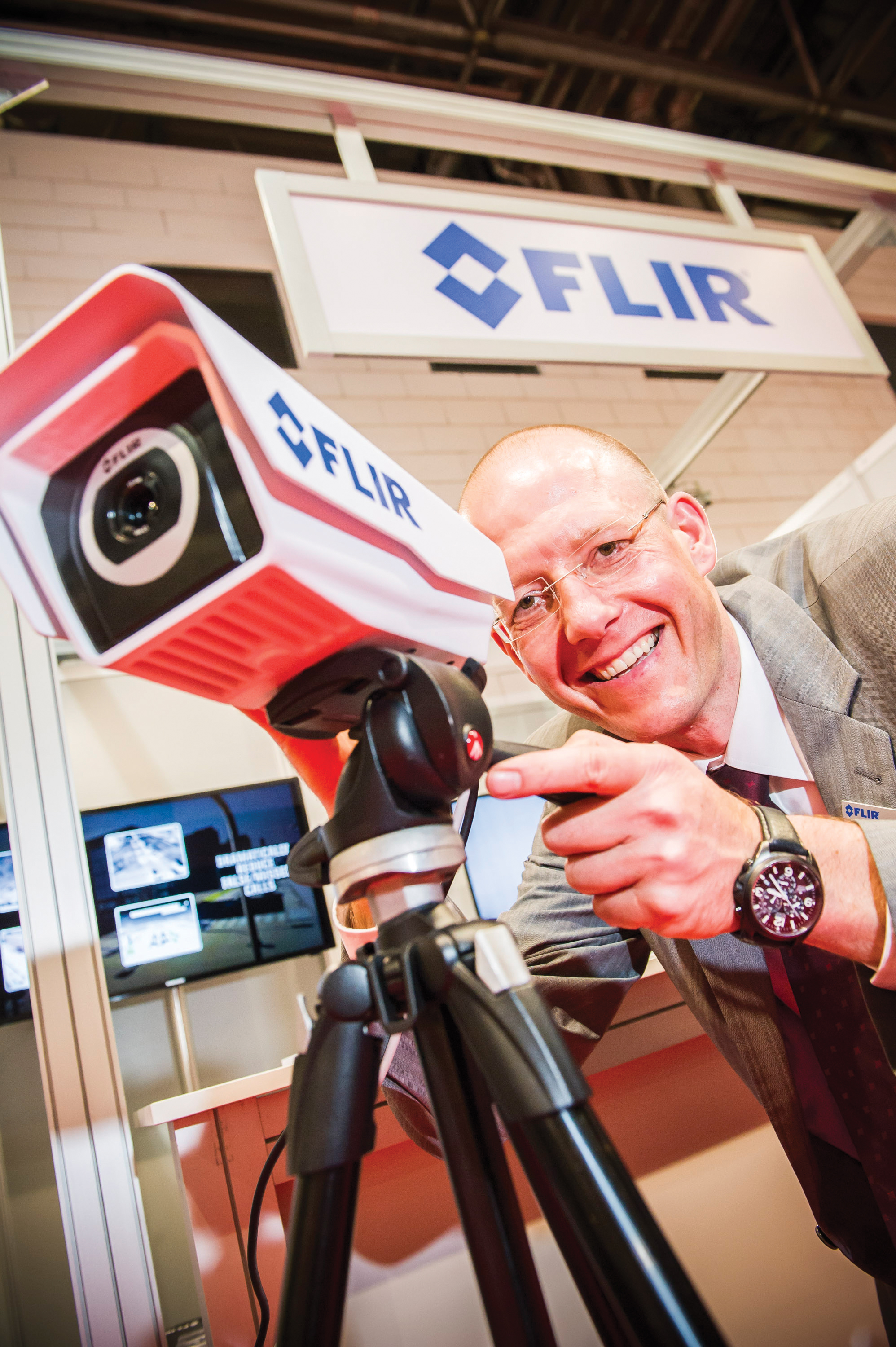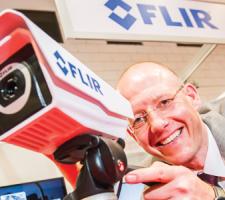
Bertrand Volckers with an infrared - spectrum camera.
Infrared cameras score over their visible light competitors for applications such as Automated Incident Detection (AID) and vulnerable road user detection, according to Dan Dietrich, the company’s Manager, Traffic & ITS.
“Detecting bicycles and pedestrians is challenging for visible-spectrum cameras in certain conditions but because we go after the heat signature of the bike and its rider, we achieve much greater success. The same applies for AID, where stopped vehicles and lost cargo detection rates are much improved overall.”
The company has achieved near-100 per cent adoption rates among those agencies which have tested its technology, Dietrich states. A big factor in this is that FLIR’s infrared cameras are a direct drop-in replacement for visible-spectrum alternatives.
“That means our customers can preserve their existing infrastructures. There’s no loop cutting and the ability to use existing processors,” he concludes.
<%$Linker:












